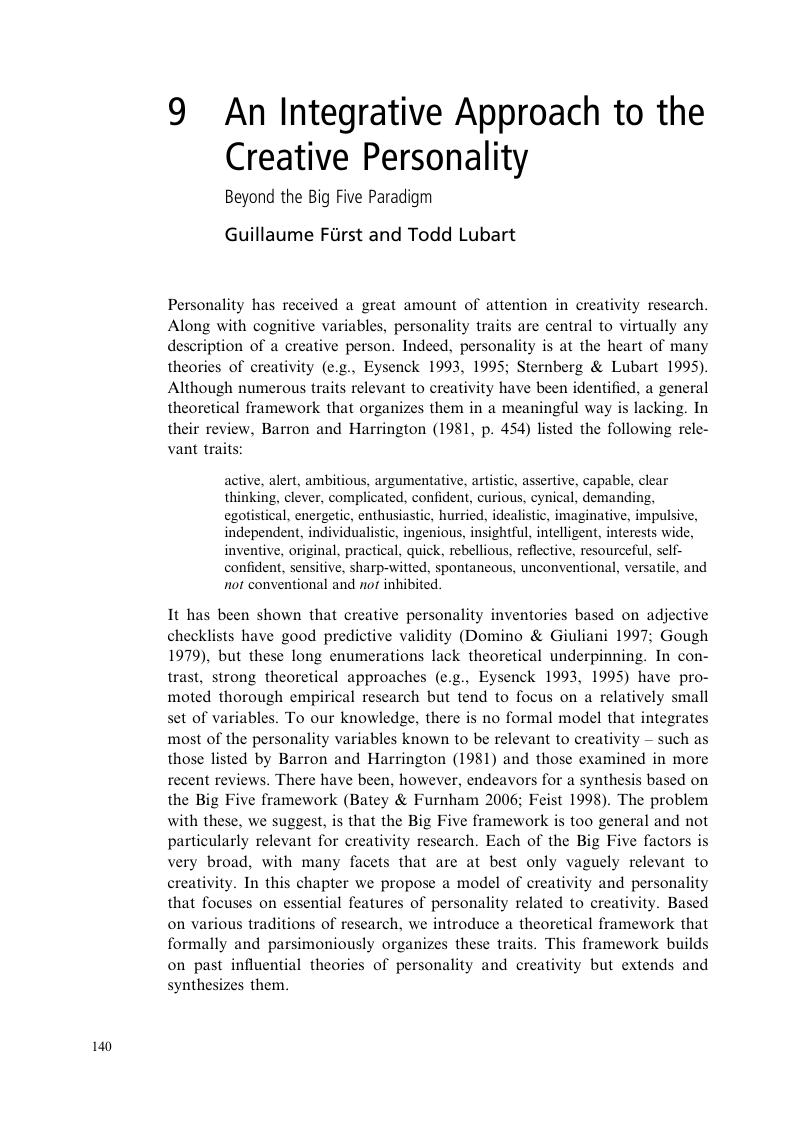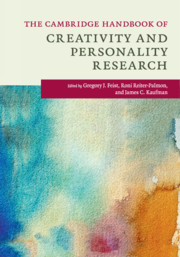Book contents
- The Cambridge Handbook of Creativity and Personality Research
- The Cambridge Handbook of Creativity and Personality Research
- Copyright page
- Dedication
- Contents
- Acknowledgments
- 1 Introduction: The Personal Side of Creativity
- Part I Process and Structure of the Creative Personality
- 2 Openness/Intellect
- 3 Sweet Dreams Are Made of This
- 4 The Curious Dynamic between Openness and Interests in Creativity
- 5 Personality, Behavioral Thresholds, and the Creative Scientist
- 6 Creative Self-Concept
- 7 Where Do Diversifying Experiences Fit in the Study of Personality, Creativity, and Career Success?
- 8 Rethinking the Multicultural Experiences–Creativity Link
- 9 An Integrative Approach to the Creative Personality
- Part II Creativity and Personality
- Part III Creativity and Personality
- Index
- References
9 - An Integrative Approach to the Creative Personality
Beyond the Big Five Paradigm
from Part I - Process and Structure of the Creative Personality
Published online by Cambridge University Press: 19 May 2017
- The Cambridge Handbook of Creativity and Personality Research
- The Cambridge Handbook of Creativity and Personality Research
- Copyright page
- Dedication
- Contents
- Acknowledgments
- 1 Introduction: The Personal Side of Creativity
- Part I Process and Structure of the Creative Personality
- 2 Openness/Intellect
- 3 Sweet Dreams Are Made of This
- 4 The Curious Dynamic between Openness and Interests in Creativity
- 5 Personality, Behavioral Thresholds, and the Creative Scientist
- 6 Creative Self-Concept
- 7 Where Do Diversifying Experiences Fit in the Study of Personality, Creativity, and Career Success?
- 8 Rethinking the Multicultural Experiences–Creativity Link
- 9 An Integrative Approach to the Creative Personality
- Part II Creativity and Personality
- Part III Creativity and Personality
- Index
- References
Summary

- Type
- Chapter
- Information
- The Cambridge Handbook of Creativity and Personality Research , pp. 140 - 164Publisher: Cambridge University PressPrint publication year: 2017
References
- 3
- Cited by



